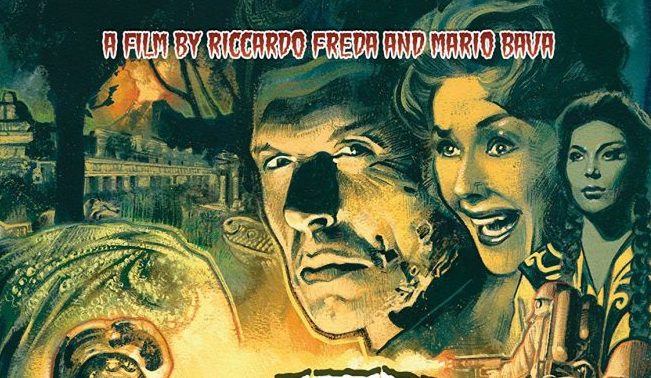
Caltiki, the Immortal Monster (1959) Blu-ray Review

Opening with shots of deserted Mayan temples in a Mexican jungle, the narrator asks the question as to the mystery of what happened to the Mayan people with the focus on a female deity called Caltiki. But the cause is not revealed as to what happened to the Mayan people according to the film until over half an hour in. It opens after the standard 50s/60s monster/sci-fi/horror credits and soundtrack with an archaeologist traumatised and exhausted having seen something terrible. He is crawling over volcanic ground, passes Mayan ruins and makes it back to the camp where the other archaeologists are camped. That night he goes mad and dies but not before he says that he has seen something horrible and screams “CALTIKI!”, the name of the Mayan deity whose temple they have come to excavate. The rest of the team, led by Professor Fielding (played by Canadian actor, John Merivale) visit the cave to investigate further. All they have to go on are the ramblings of the dying man. While one of the team dives in the underground lake in the cave he is attacked by what turns out to be a gelatanious mass, turning the diver into a melted mass of flesh and bone. Other members of the team are killed and turned into mere flesh dripping skeletons. They return to Mexico City with an injured colleague who is hospitalised. Fielding has returned with his fiancee (Didi Sullivan) and a fragment of the blobby creature. The skin disease on the hospitalised colleague’s arm is spreading to the rest of his body and face and is starting to affect his mind. Fielding experiments on the blob in the lab and once exposed to radiation the blob begins to come back to life, grows and seeks out human flesh to devour. Meanwhile the man in the hospital starts to turn into the blob and looks for his own victims. Can Fielding stop the creature?
Caltiki, the Immortal Monster (1959) is a low budget early sci-fi entry from Italy following on from the previous year’s The Day the Sky Exploded. Directed by genre director Riccardo Freda who arguably became best known as the man who gave Italy’s most famous horror director, Mario Bava his first opportunity and would lead the following year to his first directorial effort, the gothic horror Black Sunday (also known as The Mask of the Demon) that has since become a cult classic (also released on Arrow Video). It has been stated that Freda directed all the dialogue scenes and Bava shot and directed all the scenes using special-effects. Freda walked off the film – some suggested that this was to give a chance for his good friend Bava to direct (uncredited), others suggesting that Freda fell out with the producers. Either way there is some great black and white cinematography by Bava; Bava was also to become well known for his expressionist use of vivid colour in his later horror films. The special-effects are cheap looking and are not as good as they have been credited with, with some very obvious models and toy tanks, highlighted especially on the 2K transfer on the Blu-ray. The blob itself was allegedly made up of tripe which was said to have caused problems with lots of flies hovering about the mass of rotting flesh. I have to say it doesn’t look particularly like tripe, but more like soft wet leather with other materials thrown in.
The big influence or inspiration behind Caltiki was The Quatermass Xperiment (1955), the film that is often cited as launching Hammer’s foray into horror films, albeit more of a sci-fi horror. In the The Quatermass Xperiment, based off Nigel Neale’s TV play (the film was released in Italy and the rest of Europe in 1956) an astronaut comes back to Earth but is infected by exposure to an alien blob in space who turns into a flesh eating thing that grows to monstrous size. On one of the extras on the disc horror film critic Kim Newman claims that Neale felt that the film ripped off his concept, but this is not quite accurate and is in many ways like (and better than) The Blob (1958), that has Steve McQueen in an early film lead. It also resembles Hammer’s X-the Unknown (1956). Caltiki, the Immortal Monster is better than one would expect for an Italian B movie. Yes, the dialogue is poor with some suspect racism and sexism, but the black and white photography is beautfully shot by Bava with a strong use of chiaroscuro giving it a strong gothic horror element (something that Bava would become rather good at).
The extras, as is typical for Arrow Video are very good, led by a 15 minute talk on the film by Kim Newman who talks of its precedents and influences, as well as archival interviews with Italian critic, Stefano Della Casa, who knew Riccardo Freda personally and another by Luigi Cozzi. There is also the opening of the film as it would have been shown to American audiences in the dubbed version released by Allied Artists. Some great artwork on the cover by Graham Humphreys.
Chris Hick
